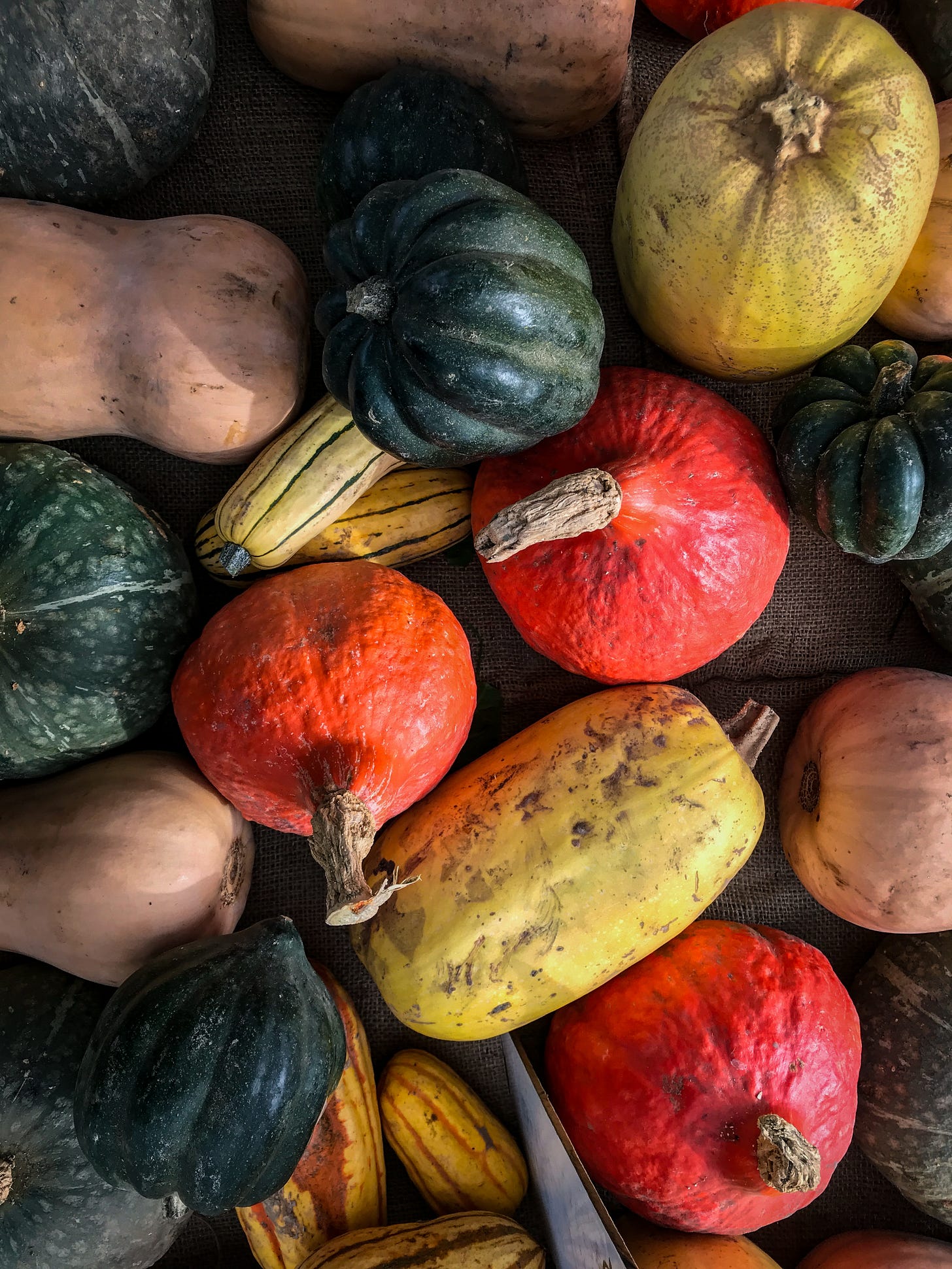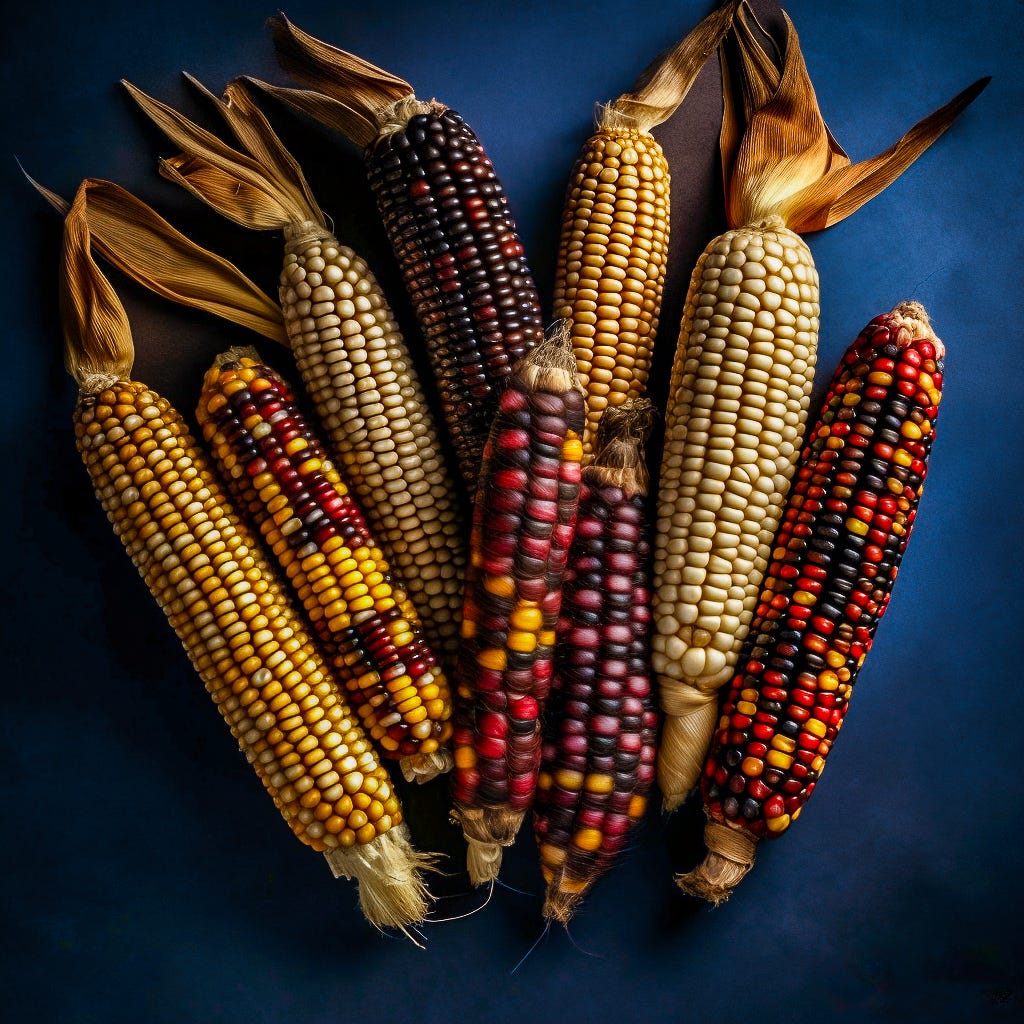NAPA, Calif. — One of the joys of being a Master Gardener is working with a team to produce an educational event for home gardeners. To that end, Master Gardeners are growing gourds, pumpkins and Indian corn for our Fall Faire on Saturday, Sept. 30.

Celebrations at the end of the growing season have been part of life for millennia. Although today’s UC Master Gardeners disseminate scientifically proven methods of growing and harvesting plants, science didn't always have much of a place in historical harvest rituals.
In times past, after a long growing season and hard work, holding a harvest festival was a way of giving thanks for the successful crops. A good harvest ensured there would be enough food during the short, dark days of winter.
This tradition of giving thanks has been practiced since pagan times. The “harvest moon,” the full moon that occurs closest to the autumnal equinox, was often the impetus for a celebration. As part of the festivities, baskets of fruit and food would be displayed for decoration. Known as a cornucopia, or horn of plenty, these baskets were shaped like a goat's horn.
Several explanations in Greek and Roman mythology for the origin of the cornucopia all have to do with breaking off the horn of a goat or horned river god and the abundance, nourishment, good luck and prosperity derived from it. The cornucopia embodies everything about harvest time, so it makes sense for this symbol of abundance to be associated with giving thanks.
Even Hades, the god of the underworld, who is said to have given agriculture and spiritual wealth to mortals, has been depicted holding a cornucopia. The best-known celebration of thankfulness in American culture is, of course, Thanksgiving.
Up until the 20th century, in Great Britain most farmers celebrated the end of the harvest with a big meal called the harvest supper. This event took place after the last patch of corn or wheat had been harvested. It was considered bad luck to be the individual who performed this task, so farmers would race against each other to be the first to finish.
This superstition was so prevalent and entrenched that workers resorted to throwing their sickles at the last stand of corn to avoid direct contact with it. In other areas reapers would take turns being blindfolded to sweep a scythe until the last stand was cut down.
Napa County Master Gardeners are growing two varieties of ornamental corn for our fall celebration. Colorful Indian corn with its traditional calico pattern of red, gold, black and yellow is one of the types. Native Americans did not eat this corn fresh but ground it into meal. It is very starchy and so hard that eating it raw can result in broken teeth. The other variety we are growing is a hybrid in shiny pastel shades of blue, pink, ruby and green.
We are also growing several varieties of gourds for the Fall Faire. Growing decorative gourds is a lot of fun, and you can find many beautiful examples of artist-decorated gourds online. Even a not-so-talented individual can have success decorating and painting dried gourds. These can be made into a wide variety of useful objects, including utensils, cups, bottles, scoops, ladles and birdhouses. Many cultures have made musical instruments from gourds. And there’s nothing better than a luffa gourd as an exfoliator in the bath.
Gourds are generally easy to grow from seed but have some cultural requirements. They need a lot of space, ample water (about an inch a week) and regular feeding. Gourds start out on the ground but eventually require trellising. It's best to install trellises before the plants grow too large so you don’t disturb the roots. They need full sun and like hot weather.
One of the gourds Master Gardeners are growing for the Fall Faire is the Tennessee spinning or dancing gourd, a charming little gourd that is only about 2 inches tall and can be used as a toy top for children. These gourds may be small, but the plant, like other gourd plants, is huge.
We are also growing luffas, which require some patience to clean. When fully mature, they must be skinned to reveal the coarse netting material inside. This material is chockful of seeds that must be removed.
Among the other hard-shelled decorative gourds are the speckled swan gourd, a large gourd with a round base and swanlike neck and head; giant bottle gourds; bushel basket gourds, their size being that of their namesake; dipper gourds with long, straight necks; and birdhouse gourds. All of them are fun to grow and decorate. Join us at the fair to see some of them.
Fall Faire: Join UC Master Gardeners of Napa County for “A Gardening Science Fair for All Ages” on Saturday, Sept. 30, from 1 to 4 p.m. at Las Flores Community Center, 4300 Linda Vista Ave., Napa. Get more details here.
Library Talk: Join UC Master Gardeners of Napa County for a free Napa Library talk on “Lawnlessness: Thinking Beyond Turf” on Thursday, Oct. 5, via Zoom. Learn about lawn alternatives that are attractive, lower maintenance and drought-tolerant. Register here to receive the Zoom link.
Help Desk: The Master Gardener Help Desk is available to answer your garden questions on Mondays and Fridays from 10 a.m. until 1 p.m. at the University of California Cooperative Extension Office, 1710 Soscol Ave., Suite 4, Napa. Or send your questions to mastergardeners@countyofnapa.org. Include your name, address, phone number and a brief description of the problem. For best results, attach a photo.
Jane Callier is a UC Master Gardener of Napa County.






Thanks for this great and newsy article, Jane ! As an old time Master Gardener it was great to see what
folks are up to these days . Thanks Tim, for including this important content .
Great article Jane!